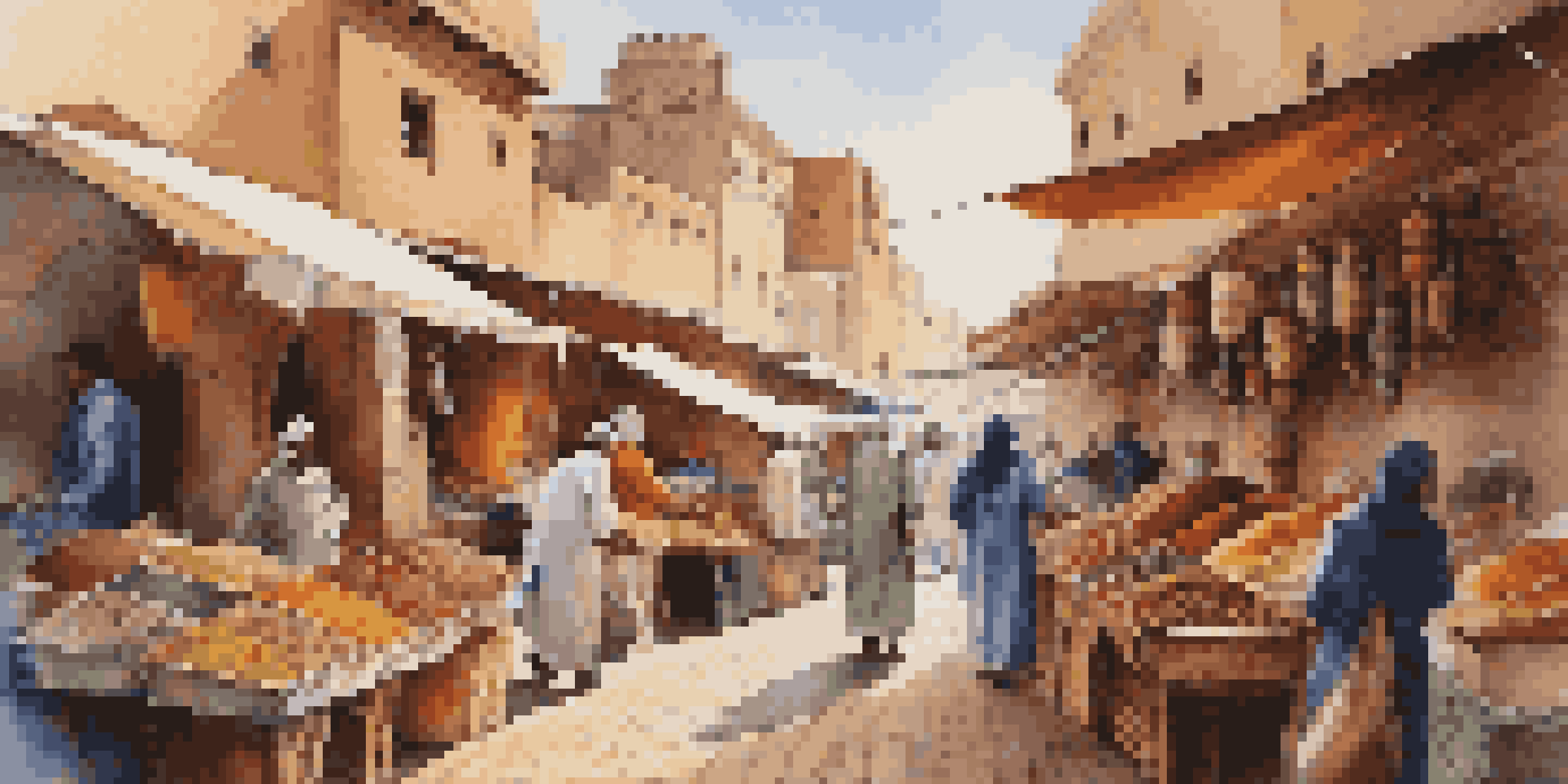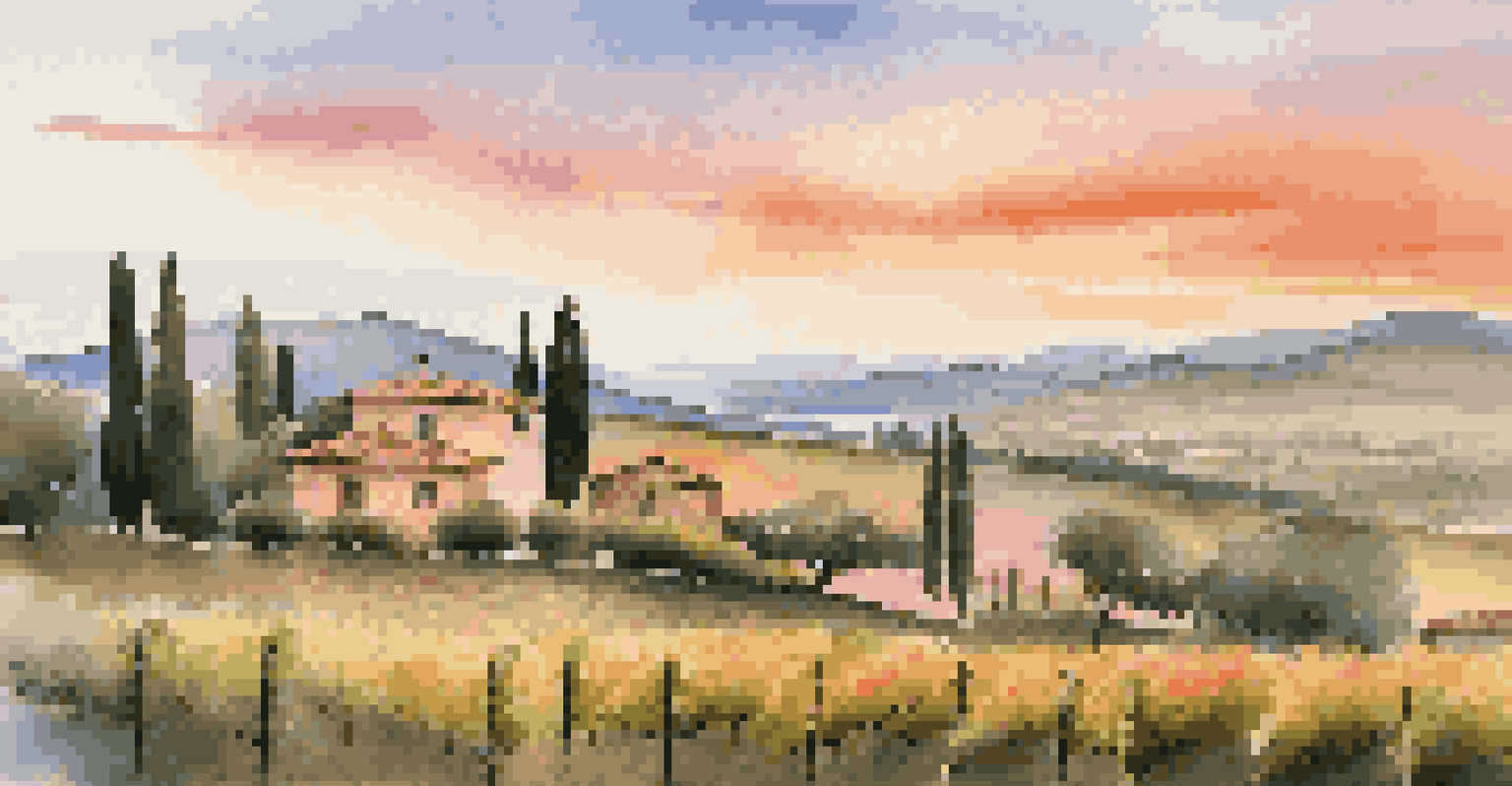Travel and Art: A Dialogue Between Cultures and Creativity

The Intersection of Travel and Artistic Inspiration
Travel has long been a muse for artists, offering new landscapes, people, and experiences that ignite the creative spark. From the vibrant colors of a Moroccan market to the serene beauty of the Italian countryside, these diverse settings provide a wellspring of inspiration. Many renowned artists, like Van Gogh and Gauguin, sought out new environments to expand their artistic horizons, capturing the essence of their travels on canvas. This dialogue between travel and art not only enhances the artist's portfolio but also enriches their understanding of the world.
Travel is fatal to prejudice, bigotry, and narrow-mindedness, and many of our people need it sorely on these accounts. Broad, wholesome, charitable views of men and things cannot be acquired by vegetating in one little corner of the earth all one’s lifetime.
As artists journey through different cultures, they often absorb local traditions and styles, blending them into their own work. This fusion creates a unique artistic voice that reflects a tapestry of influences. For instance, the intricate designs of Indian textiles have inspired countless fashion designers, merging tradition with contemporary aesthetics. Such exchanges highlight how travel can act as a bridge, connecting cultures and fostering creativity.
Moreover, travel allows artists to engage with local communities, deepening their appreciation of diverse perspectives. Workshops, artist residencies, and cultural exchanges enable creators to learn firsthand about different artistic practices. This immersion not only influences their work but also promotes cultural understanding, emphasizing the importance of collaboration in the art world.
Art as a Reflection of Cultural Identity
Art often serves as a mirror, reflecting the values, beliefs, and experiences of a culture. Each region has its artistic styles, whether it's the bold colors of African art or the minimalist aesthetics of Japanese prints. By exploring these forms, travelers gain insights into the identity of the places they visit, fostering a deeper connection to local communities. This cultural exchange enriches both the traveler and the artist, as they learn from one another's stories.

For instance, Indigenous art often conveys historical narratives, spirituality, and a profound connection to nature. When travelers engage with these artworks, they not only appreciate their beauty but also understand the cultural significance behind them. This understanding promotes respect for the culture and its traditions, creating a dialogue that transcends borders.
Travel Inspires Artistic Expression
Travel serves as a powerful catalyst for artists, enriching their work by introducing them to new cultures and experiences.
Furthermore, artists who incorporate elements of their heritage into their work help to preserve cultural identities in an increasingly globalized world. Through their art, they can raise awareness about issues such as cultural appropriation and the importance of representation. This dialogue emphasizes the power of art in advocating for social change and fostering appreciation for diversity.
Culinary Arts: A Delicious Cultural Exchange
The culinary arts are a flavorful embodiment of cultural dialogue, where ingredients and techniques tell stories of a region's heritage. Travel opens the door to exploring diverse cuisines, encouraging an appreciation for local flavors and cooking methods. Whether it's savoring street food in Bangkok or fine dining in Paris, each dish offers a taste of the culture it originates from. This sensory experience not only delights the palate but also fosters connections between travelers and locals.
Art is the most beautiful of all lies.
As chefs travel and experiment with various culinary traditions, they often create innovative dishes that blend different cultural elements. For instance, the rise of fusion cuisine showcases how ingredients from one culture can harmoniously coexist with those from another. The result is a delectable dialogue that reflects the evolving nature of food and culture, encouraging culinary creativity.
Moreover, food festivals and cooking classes allow travelers to engage with local culinary artists, learning techniques that they can carry home. These interactions not only enhance the travel experience but also create lasting memories centered around shared meals. Ultimately, the culinary arts serve as a delicious reminder of the beauty found in cultural exchange.
Music and Dance: Rhythms of Cultural Connection
Music and dance are universal languages that transcend cultural barriers, often flourishing in spaces where travel allows for cultural exchange. From the samba rhythms of Brazil to the traditional dances of Bali, these art forms embody the spirit of their cultures. Travelers who immerse themselves in local music scenes often find themselves swept up in the energy and passion that define a community's artistic expression. This connection fosters an appreciation for the cultural roots of these art forms.
As musicians and dancers travel, they share their traditions while also absorbing new influences. Collaborations between artists from different backgrounds often lead to the creation of unique genres that blend various styles. For example, the fusion of jazz and African rhythms has resulted in captivating music that resonates with audiences worldwide. These collaborations highlight the power of art to unite people across cultural divides.
Art Reflects Cultural Identity
Art acts as a mirror to cultural values and beliefs, fostering understanding and appreciation between travelers and local communities.
Engaging with music and dance while traveling can also promote a sense of belonging. Participating in local festivities or workshops allows travelers to connect with communities on a deeper level. This shared experience fosters cultural understanding and appreciation, reminding us of the role art plays in bridging gaps between diverse cultures.
Visual Arts: Capturing the Essence of Place
Visual arts, such as painting, photography, and sculpture, provide a tangible way to capture the essence of a place. Artists often use their medium to express the beauty, struggles, and stories of the environments they encounter while traveling. For example, landscape photographers may seek out stunning vistas to convey a sense of awe, while street artists can reflect urban life through their murals. This ability to visually communicate the unique character of a location allows art to serve as a cultural ambassador.
Traveling artists frequently create works that document their experiences, offering viewers a glimpse into the places they have visited. These pieces can serve as powerful reminders of the beauty and diversity of the world around us. Additionally, art exhibitions that showcase works inspired by travel can foster discussions about the cultures represented, encouraging viewers to engage with the narratives behind the art.
Moreover, visual arts can play a pivotal role in preserving cultural heritage. Artists who focus on traditional techniques or themes help to keep cultural practices alive, bridging the gap between past and present. By showcasing these works, travelers can gain a deeper understanding of the significance of art in cultural identity, creating a lasting impact on their journey.
The Role of Technology in Art and Travel
In our digital age, technology has transformed the way we experience art and travel. Virtual tours, online galleries, and social media platforms allow people to explore art from around the world without leaving their homes. This accessibility democratizes art appreciation, enabling diverse audiences to connect with different cultures and artistic expressions. As a result, a broader dialogue emerges, fostering cross-cultural understanding through the lens of technology.
Moreover, artists are leveraging technology to enhance their creative processes while traveling. From digital painting to photography, new tools allow for innovative ways to capture and share experiences. For instance, artists can instantly document their travels through social media, sharing their work with a global audience in real time. This immediacy not only promotes their art but also encourages dialogue with viewers who may contribute their own perspectives.
Technology Enhances Art Experiences
The rise of technology has transformed how we engage with art and travel, making diverse cultural expressions more accessible than ever.
However, the role of technology in art and travel raises questions about authenticity and cultural representation. As artists navigate the digital landscape, they must consider the implications of sharing their work in a global context. This dialogue encourages artists to engage thoughtfully with their influences and the cultures they represent, fostering a deeper appreciation for the stories behind their creations.
The Future of Travel and Art: A Harmonious Journey
As we look to the future, the relationship between travel and art continues to evolve, promising exciting possibilities for cultural exchange. With a growing emphasis on sustainable tourism, artists are increasingly inspired to create works that reflect their commitment to environmental stewardship and social responsibility. This shift encourages travelers to engage with art in ways that honor the cultures and communities they visit, fostering a more respectful and mindful approach to exploration.
Furthermore, collaborations between artists and local communities are becoming more prevalent, emphasizing the importance of inclusivity in the creative process. By involving local voices in artistic projects, travelers can help ensure that the narratives being shared are authentic and representative. This collaborative spirit enriches the artistic landscape, creating a dialogue that honors cultural heritage while embracing modernity.

Ultimately, the future of travel and art lies in the harmonious exchange of ideas, stories, and experiences. As artists and travelers continue to connect with diverse cultures, the potential for creativity knows no bounds. This ongoing dialogue not only enriches individual journeys but also contributes to a greater understanding of the world, fostering a sense of unity through the power of art.